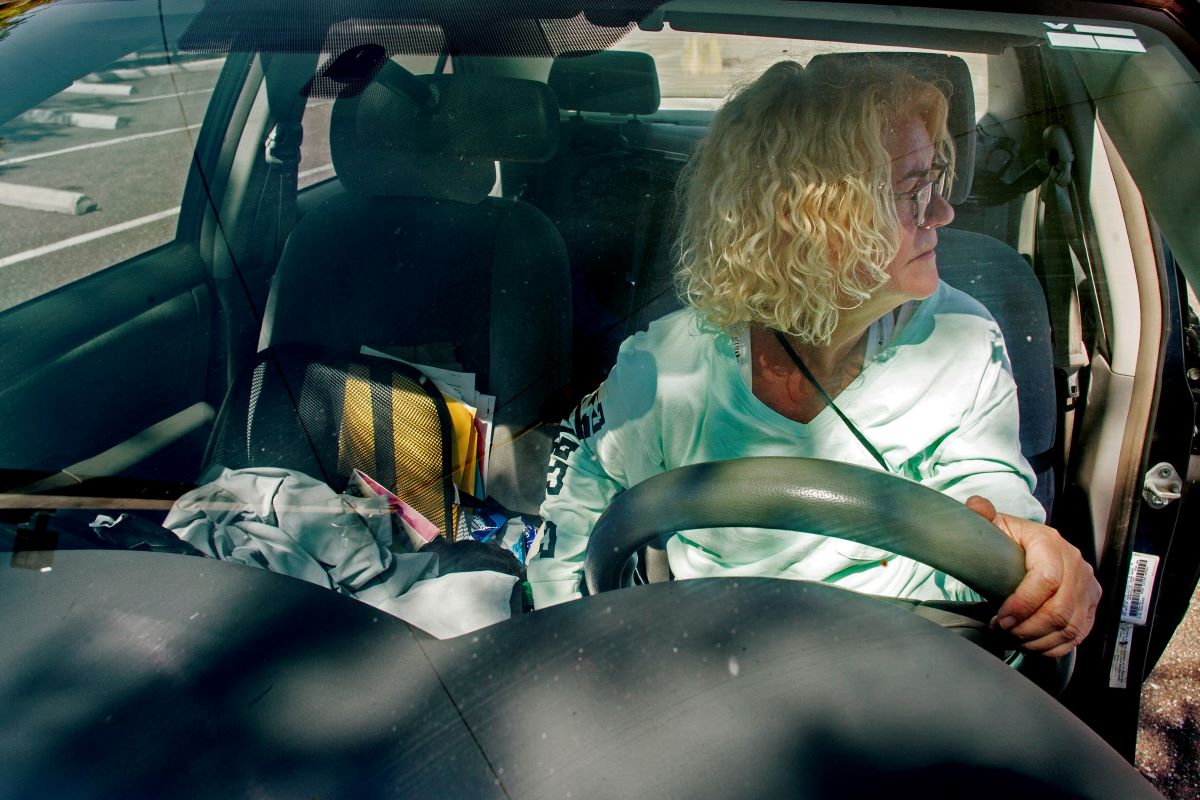On the Heels of the Pandemic, the Growing Population of Unsheltered People Are Forced to Live in Their Vehicles
A friend of mine who works in the criminal justice system once said to me in confidence, “I know incarceration is a scam because the same number of inmates go out and come in each month. The job isn’t to keep crime down. It’s to keep the prisons full.”
Ever since he pointed this out to me, I’ve kept my eyes peeled for systems where numbers mirror each other, knowing there is probably something afoot when the same number of people that go out then come in. Recently, I observed this trend of identical numbers happening in regards to homelessness and eviction. Here’s the breakdown:
- Approximately 10 million US workers are unemployed as a result of the international shutdowns.
- Approximately 10 million people are behind on their rental payments as well.
So, what gives? Eviction moratoriums and government funding are fading. Many believe the most recent rescue package will likely be the last. There’s talk of mass vaccination, opening schools, and rebuilding the economy that’s currently hanging by a thread. The world we knew a year and a half ago has been erased, replaced with a cautious, feeble reality.
It’s a new day. While many people used to get in their cars and head to work, they are now getting in their cars and turning in for the night.
Vehicular homelessness is rising at dramatic rates. This is a reflection of the circumstances. This state of homelessness is not affecting people who were already in desolate poverty per se. Instead, it is wreaking havoc on middle-wage workers who experienced a sudden shift in circumstances.
Yesterday they had the job, the house, the car, the so-called safety net of security. Today, unemployment is a parking lot where furloughed employees go to put their former lives to rest.
As of February 2021, More People Are Living in Their Cars Than There Were Before the Pandemic.
This is astonishing news when you consider that in 2018 more people were living in vehicles than there had ever been from a historical standpoint. We just surpassed that number by a landslide.
Mobile homelessness is the highest it has ever been at any place, during any time on national record. In an interview with USA Today, Postdoctoral Scholar with the Benioff Homelessness & Housing Initiative at the UCSF Center for Vulnerable Populations confirmed that the rise in mobile/vehicular homelessness was happening at “unprecedented levels”. In reality, though, this could be the beginning of yet another crisis.
Could Vehicular Homelessness Become the Leading Type of Homelessness to Affect Americans? The Answer is a Resounding Yes.
The National League of Cities posits that:
“Vehicular homelessness represents the growing population of unsheltered people.”
It also represents the growing number of middle-class people being driven out of the workforce and into abject poverty. The aftereffect is this very distinct sub-type of unsheltered homelessness.
To an individual or family with no unsheltered life experience, a vehicle might seem like a safe place to survive. But in reality, taking up residence in the family minivan in the back of a Walmart parking lot or along the shoulder of a stretch of highway is incredibly dangerous. For one thing, it makes this group of individuals who are often categorized as “hidden homeless” visibly homeless once the sun goes down. Therefore, they are more vulnerable to:
- Harassment
- Assault
- Theft
- Arrest
As Automobile Homelessness Increases, Laws Against Sleeping in Vehicles Reach Never Before Seen Heights as Well
When the National Law Center on Homelessness and Poverty analyzed the recent trend, they were baffled to learn that as vehicle residency skyrocketed to all-time highs, legislation banning vehicle residency escalated by a whopping 143%. These results reflect a decade’s worth of research within 187 US cities.
To put things into perspective, the leading causes of vehicular homelessness are:
- Wage stagnation
- COVID-related unemployment or underemployment
- Lack of affordable housing
- Rent increases pacing at double the rate of the national wage
All of these reasons reflect a crumbling economy. So, why would criminalization, arrests, court dates, court fees, and citations be the answer?
The Dangers of Vehicular Homelessness on Society at Large
Homelessness in and of itself is a public health crisis. When you add vehicles into the equation, what you get is a negative environmental impact for the individual(s) experiencing mobile homelessness due to their exposure to poor air quality. This also impacts individuals in surrounding communities as cars are turned on unnecessarily in order to provide heat, shelter, or even to move from place to place seeking safety.
On a more subliminal level, the premise of residing in a vehicle is becoming a somewhat acceptable form of “affordable housing”. There are all sorts of problems with taking this stance. The most glaring is the fact that a house is not a car. Among other things, vehicle residency:
- Is unsanitary as many vehicles do not have running water, plumbing, bathrooms, etc.
- Is restrictive, forcing inhabitants to spend a great deal of time seated or hunched over
- Creates poverty as tickets and fines pile up and the price of vehicle maintenance from overuse becomes a serious problem
Safe Parking Lots Provide a Temporary Solution that Should Not Replace Real Housing
Seeing the imminent need, many cities have scrambled to create “safe parking” programs. Such programs create a space for individuals experiencing vehicular homelessness to park safely and free from harm. These programs also provide:
- Social services
- Storage
- Restrooms
- Garbage removal
While they are a promising step in the right direction, we should never stop forging the path toward affordable housing for all.













